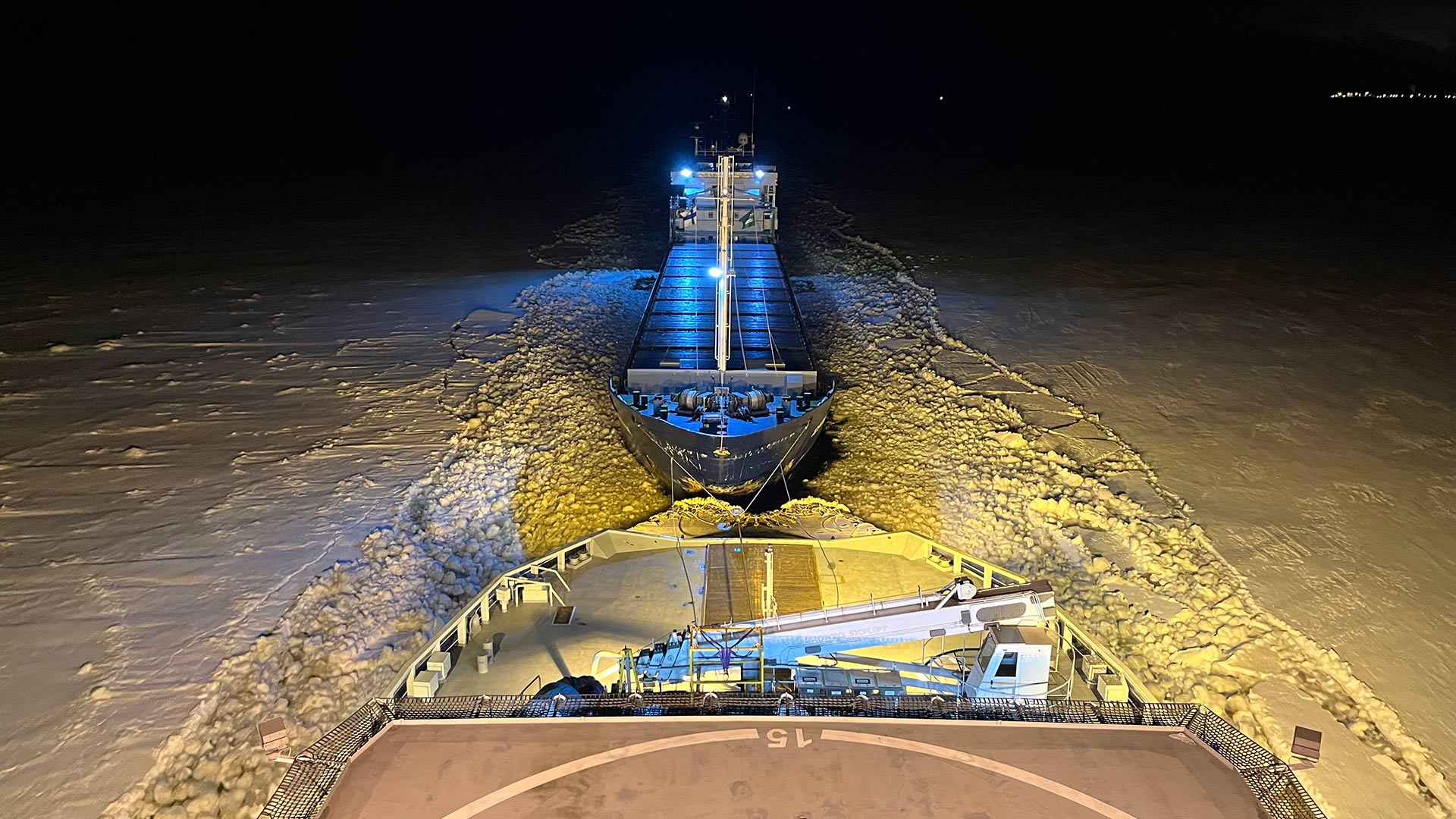The winter of icebreaking season 2023–2024 was average, but the season lasted 191 days
Published 29.5.2024 16.06
The icebreaking season began exceptionally early, on 23 November 2023, with Kontio leaving for the Bay of Bothnia as the first icebreaker of the season. The last icebreaker to return to Katajanokka was Otso on 31 May 2024. Thus, the icebreaking season lasted a total of 191 days. In the Gulf of Finland, the icebreaking season began on 4 January and lasted 97 days, until 9 April.

The icebreaking season began earlier than usual, and the first assistance restrictions in the Bay of Bothnia were imposed as early as 22 November 2023. In early January, it looked like the winter would be characterised by average temperatures or that it might even be more severe than average. The lowest temperature of the winter, -44.3°C, was recorded at Enontekiö airport on 5 January 2024. This is the lowest reading measured in the 21st century at the Finnish Meteorological Institute's meteorological stations.
The development of ice coverage slowed down in February due to strong winds and slightly milder weather. The amount of ice at sea did not significantly decrease, however, but instead, it accumulated off the ports of northern Bay of Bothnia.
Ice coverage was at its largest on 12 February, two weeks earlier than average. On that day, ice covered an area of 135,000 km2, which means that the winter 2023–2024 will be classified as average.
All nine icebreakers in operation with 2,234 assists
"All Finnish icebreakers were in operation during the past winter. In addition, close cooperation was carried out with the Swedish icebreaking fleet. The exceptional variation of harsh and mild winter conditions posed challenges particularly in the Bay of Bothnia", says Tuomas Taivi, Senior Maritime Officer at the Finnish Transport Infrastructure Agency.
A total of ten icebreakers were in operation in the Finnish sea areas during the season. Otso, Kontio, Sisu, Urho and Polaris operated in the Bay of Bothnia. Zeus of Finland mainly assisted vessels in Vaasa and Kaskinen but towards the end of the season, it also operated in the southern parts of the Bay of Bothnia.
During January, the ice field also extended to the coast of the Bothnian Sea. The last time the ice field in the area was this extensive was in 2011. For this reason, Calypso-Saimaa joined Zeus of Finland in assistance work, bringing the total number of icebreakers operating in the sea area to ten.
Early in the season, icebreaking in the Gulf of Finland was the task of Calypso-Saimaa and Voima. After mid-January, they were joined by Fennica and Nordica, with Calypso-Saimaa relocating to the Archipelago Sea and the southern Bothnian Sea.
The icebreakers logged a total of 1,142 days of operation, although two icebreakers were absent from operation for a total of 22 days due to strikes in late winter. The real figure could therefore have been 1,164 days. In the previous season of 2022–2023, icebreakers logged only 684 days of operation.
During the season, the icebreakers sailed a total of about 86,000 nautical miles (44,789 in the previous season), which is about 159,000 km or four times around the globe. There were approximately 13,600 ship calls to ports under assistance restrictions.
During the season, a total of 2,234 assists were made in the Finnish sea areas, of which 428 involved towing. In the previous season of 2022–2023, there were a total of 1,233 assists, of which 77 involved towing.
The assistance restrictions were imposed on 22 November 2023, and the last ones will most likely be lifted at the turn of June. The unverified average waiting time for icebreaker assistance was 6.4 hours. About 95.8% of all vessels were able to enter the ports with assistance restrictions without waiting.
The assistance restrictions determine which vessels are entitled to icebreaker assistance in Finnish ports. The assistance restrictions depend on the vessel’s ice class, engine output and size as well as the prevailing ice conditions.
The Finnish Transport Infrastructure Agency is responsible for the public office duties and procurement associated with winter navigation as well as for the national coordination, development and control operations.
Read more about winter navigation
The redesigned Baltice.org service provides up-to-date information on winter navigationThis is an external link (feedback about the service can be submitted to [email protected])
More information
Helena Orädd, Head of Unit, tel. +358 29 534 3321, [email protected]
Tuomas Taivi, Senior Maritime Officer, tel. +358 29 534 3328, [email protected]
Attachments
This is an old article. It may contain deprecated information and the links may not work. Our publications can be found in the Doria publication archive
